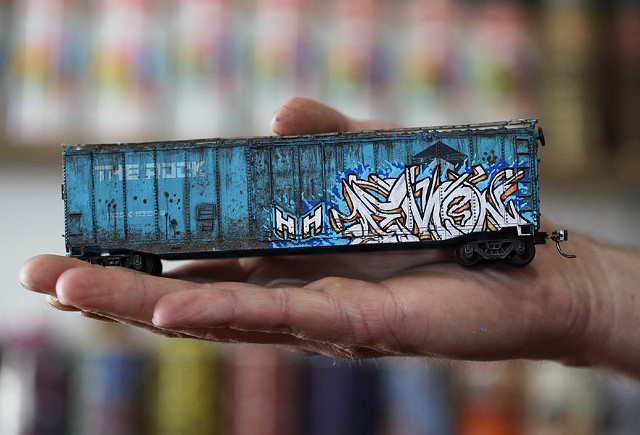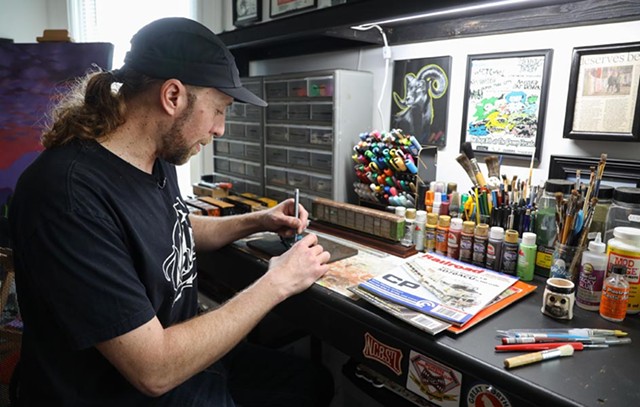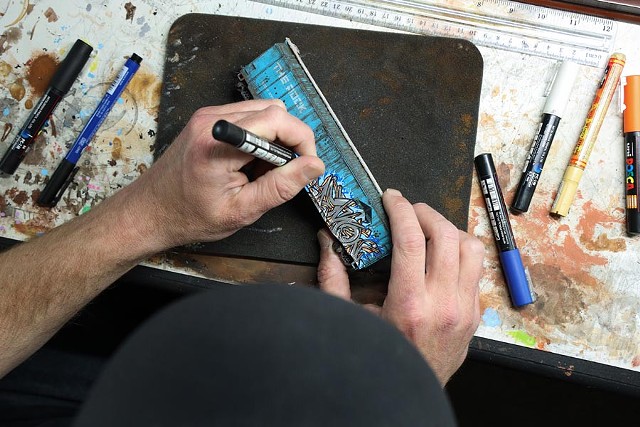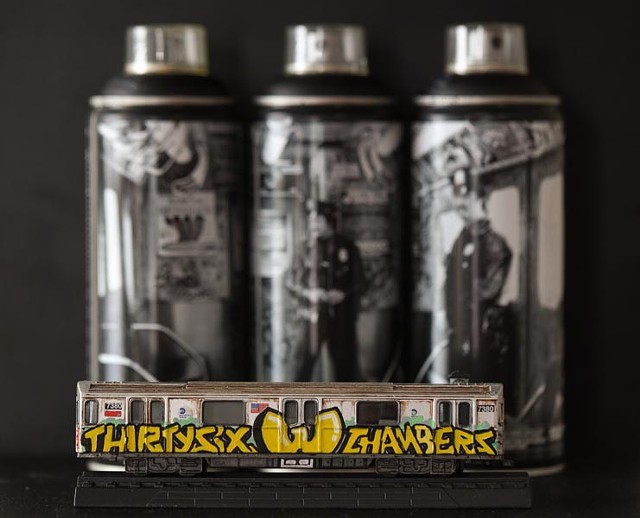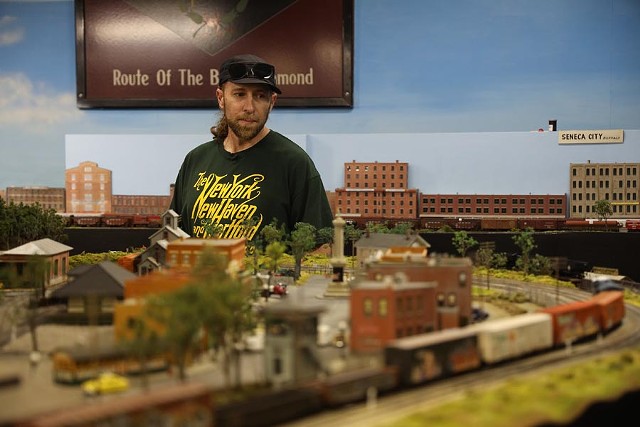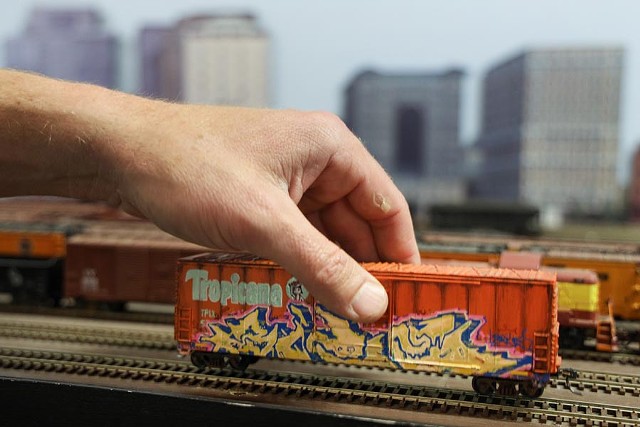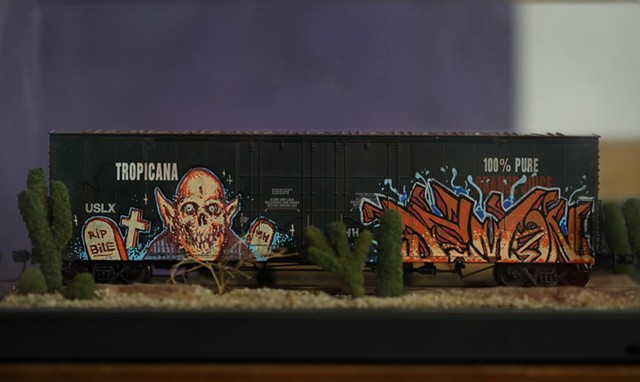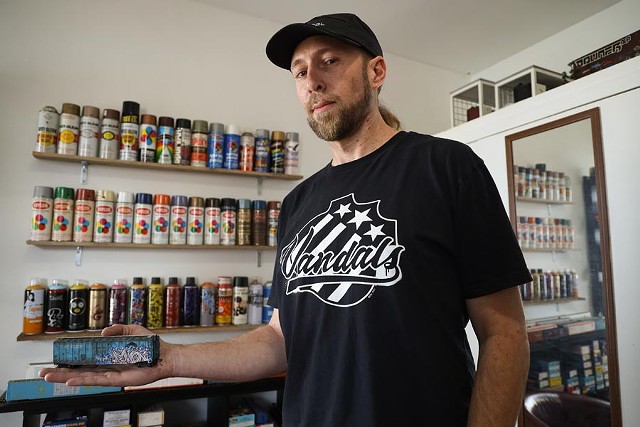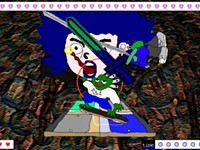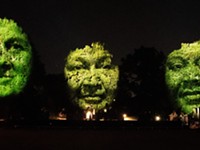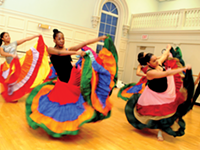[
{
"name": "500x250 Ad",
"insertPoint": "5",
"component": "15667920",
"parentWrapperClass": "",
"requiredCountToDisplay": "1"
}
]
Alex Price remembers how the gloomy Goodman Street Railyard hissed after dark with aerosol energy for graffiti artists like him.
The chain-link fences, the towers, the spotlights, and the railroad workers roaming between boxcars gave the place the feel of a prison yard. For Price, entering in the dead of night with a duffel bag teeming with spray-paint was like a covert military exercise.
There were the games of cat-and-mouse with the switchmen and the cops. There were territorial disputes between artists. Sometimes the freight car — a 30-ton steel canvas — would roll, threatening life and limb. Danger was the drug.
“If it’s not the train people that are going to get you, maybe it’s somebody else painting graffiti that doesn’t want you in their train yard,” Price said.
That was before he came of age — middle age, that is.
These days, Price, 39, is more likely to be hunched over a desk in his home art studio on South Union Street, marker in hand, plying graffiti to a tiny model freight train car.
On a recent day in late spring, he was tagging a replica of a blue refrigerated boxcar with his moniker — “Demon.” His long hair was in a ponytail under a baseball cap and he wore a black T-shirt emblazoned with “Vandals.”
“Painting trains at my house, in the sanctity of my home and my studio, there’s no risk, there’s no adventure,” Price said.
But replicating the work he once did on real trains in miniature form in his studio has its own rewards.
“Some people meditate. Some people go out in the woods,” Price said. “There’s that little Zen moment. For me, when I’m sitting here and have some music playing or listening to a podcast . . . I think that is a peaceful way to escape.”
Trains have long been synonymous with escape in American lore. They cut through the landscape on their way to other places, maybe better places, their plaintive cry beckoning in the night.
For nearly as long as trains have crisscrossed the country, though, there have been people who have defaced them.
Railroad workers were perhaps the first vandals. They wrote in chalk on wooden boxcars the arrival and departure times and other information about the contents of a car for colleagues in distant railyards.
By the late 19th and early 20th centuries, hobos who illegally hopped freight trains were leaving their mark, and more. Their drawings, as explored in the 2010 documentary “Who is Bozo Texino?” were a complex code of messages that informed fellow travelers where they were, where they were going, and what was ahead.
The roots of spray-paint graffiti date to the late 1960s in Philadelphia, where a prolific tagger who went by “Cornbread” tattooed the city.
A few years later, young people in The Bronx linked to the fledgling hip-hop culture began spray-painting the sides of subway cars, turning the city’s transit system into a rolling museum of art, or blight, depending on one’s point of view.
The train graffiti of modern times draw from its lineage. Graffiti on boxcars today spans the spectrum, from hastily scrawled tags to extravagant works of art that make use of stencils, shadows, and shading.
Ed O’Connell, president of the Rochester Model Railroad Club, is no fan of graffiti on trains, model or otherwise.
He acknowledged, though, that train graffiti is omnipresent and model railroaders turn to artists like Price to mimic reality. Price recently taught a clinic at the club on how to weather and graffiti model trains.
“In some ways it’s vandalism, and some of it is quite artistic,” O’Connell said. “. . . We do have real life railroaders who come down to our open house and say (of the graffiti-strewn trains), ‘Ooh, hey that’s pretty cool.’”
The club, in the basement of the First Universalist Church on South Clinton Avenue, is a hangout for Price. There, he runs his trains on the club’s elaborate replica of the Lehigh Valley Railroad, capturing videos of his artwork in action (he posts on Instagram under @demondoesthingz).
“Seeing my trains in these scene settings, it is a pretty awesome feeling,” Price said as his engine pulled a line of graffiti-covered freight cars through a miniature industrial stretch of Buffalo.
“The kids that are getting into modeling are into replicating dirty areas with trash and graffiti, the kind of things you see in the real world,” he said. “So there is a whole culture of modelers that are into this dirtier, grimier, grittier stuff.”
Price pays the bills working for a ski and snowboard apparel company, but he has managed to earn some pocket money with his hobby. He charges between $100 and $200 for most of his work, which appears to be the going rate. Hand-painted, graffiti-strewn model trains recently listed on eBay for between $25 and $300.
It may be tempting for a newcomer to the hobby to go overboard and paint the entire side of a boxcar. But the goal, model train graffiti artists say, is to replicate the real world.
That means tagging perhaps just a corner of a boxcar, and only so high as the average person could reach. It could also mean leaving a tag unfinished. Sometimes the artist’s canvas rolls away, bound for some faraway destination.
The work of some artists is so spot-on that the average observer has a hard time distinguishing between the replica and the real thing in a photograph.
Bruce Bayard, a model train graffiti artist from Oregon, is one of them. His website, modeltraingraffiti.art, displays photographs of his miniature creations against real railroad backdrops.
“It’s kind of freaky,” he said. “When you look at these things, you’re really not sure what you’re looking at. People keep asking me, ‘What am I looking at here? A model or a real train?’”
Many of the jobs Price gets from model railroad buffs are requests for him to replicate graffiti that they have photographed on a real train.
“When it comes to the reward of doing the miniature trains, for me that is if I can replicate the things I’m seeing in the real world, make them completely on scale in a miniature sense, where if I hold up the small one in front of a photograph of the real one you wouldn’t know the difference,” Price said.
It had been more than a year since he tagged a real train before he got the itch a month ago and went for it. He said the timing “just felt right.”
Sometimes, Price said, he wishes he lived in the middle of nowhere in a little town with a manufacturing plant where trains shuttled in and out all day and night, and he could paint them all.
“I would know all 200 people that live in that area or work there and they would just say, ‘There’s the guy that paints the trains,’ and no one would say a word about it,” Price said. “But those places are hard to come by these days.”
Then he took the cap from a marker and drew on the blue refrigerated boxcar in his hand.
David Andreatta can be reached at [email protected].
The chain-link fences, the towers, the spotlights, and the railroad workers roaming between boxcars gave the place the feel of a prison yard. For Price, entering in the dead of night with a duffel bag teeming with spray-paint was like a covert military exercise.
There were the games of cat-and-mouse with the switchmen and the cops. There were territorial disputes between artists. Sometimes the freight car — a 30-ton steel canvas — would roll, threatening life and limb. Danger was the drug.
“If it’s not the train people that are going to get you, maybe it’s somebody else painting graffiti that doesn’t want you in their train yard,” Price said.
That was before he came of age — middle age, that is.
These days, Price, 39, is more likely to be hunched over a desk in his home art studio on South Union Street, marker in hand, plying graffiti to a tiny model freight train car.
On a recent day in late spring, he was tagging a replica of a blue refrigerated boxcar with his moniker — “Demon.” His long hair was in a ponytail under a baseball cap and he wore a black T-shirt emblazoned with “Vandals.”
“Painting trains at my house, in the sanctity of my home and my studio, there’s no risk, there’s no adventure,” Price said.
But replicating the work he once did on real trains in miniature form in his studio has its own rewards.
“Some people meditate. Some people go out in the woods,” Price said. “There’s that little Zen moment. For me, when I’m sitting here and have some music playing or listening to a podcast . . . I think that is a peaceful way to escape.”
Trains have long been synonymous with escape in American lore. They cut through the landscape on their way to other places, maybe better places, their plaintive cry beckoning in the night.
For nearly as long as trains have crisscrossed the country, though, there have been people who have defaced them.
Railroad workers were perhaps the first vandals. They wrote in chalk on wooden boxcars the arrival and departure times and other information about the contents of a car for colleagues in distant railyards.
By the late 19th and early 20th centuries, hobos who illegally hopped freight trains were leaving their mark, and more. Their drawings, as explored in the 2010 documentary “Who is Bozo Texino?” were a complex code of messages that informed fellow travelers where they were, where they were going, and what was ahead.
The roots of spray-paint graffiti date to the late 1960s in Philadelphia, where a prolific tagger who went by “Cornbread” tattooed the city.
A few years later, young people in The Bronx linked to the fledgling hip-hop culture began spray-painting the sides of subway cars, turning the city’s transit system into a rolling museum of art, or blight, depending on one’s point of view.
The train graffiti of modern times draw from its lineage. Graffiti on boxcars today spans the spectrum, from hastily scrawled tags to extravagant works of art that make use of stencils, shadows, and shading.
Ed O’Connell, president of the Rochester Model Railroad Club, is no fan of graffiti on trains, model or otherwise.
He acknowledged, though, that train graffiti is omnipresent and model railroaders turn to artists like Price to mimic reality. Price recently taught a clinic at the club on how to weather and graffiti model trains.
“In some ways it’s vandalism, and some of it is quite artistic,” O’Connell said. “. . . We do have real life railroaders who come down to our open house and say (of the graffiti-strewn trains), ‘Ooh, hey that’s pretty cool.’”
The club, in the basement of the First Universalist Church on South Clinton Avenue, is a hangout for Price. There, he runs his trains on the club’s elaborate replica of the Lehigh Valley Railroad, capturing videos of his artwork in action (he posts on Instagram under @demondoesthingz).
“Seeing my trains in these scene settings, it is a pretty awesome feeling,” Price said as his engine pulled a line of graffiti-covered freight cars through a miniature industrial stretch of Buffalo.
“The kids that are getting into modeling are into replicating dirty areas with trash and graffiti, the kind of things you see in the real world,” he said. “So there is a whole culture of modelers that are into this dirtier, grimier, grittier stuff.”
Price pays the bills working for a ski and snowboard apparel company, but he has managed to earn some pocket money with his hobby. He charges between $100 and $200 for most of his work, which appears to be the going rate. Hand-painted, graffiti-strewn model trains recently listed on eBay for between $25 and $300.
It may be tempting for a newcomer to the hobby to go overboard and paint the entire side of a boxcar. But the goal, model train graffiti artists say, is to replicate the real world.
That means tagging perhaps just a corner of a boxcar, and only so high as the average person could reach. It could also mean leaving a tag unfinished. Sometimes the artist’s canvas rolls away, bound for some faraway destination.
The work of some artists is so spot-on that the average observer has a hard time distinguishing between the replica and the real thing in a photograph.
Bruce Bayard, a model train graffiti artist from Oregon, is one of them. His website, modeltraingraffiti.art, displays photographs of his miniature creations against real railroad backdrops.
“It’s kind of freaky,” he said. “When you look at these things, you’re really not sure what you’re looking at. People keep asking me, ‘What am I looking at here? A model or a real train?’”
Many of the jobs Price gets from model railroad buffs are requests for him to replicate graffiti that they have photographed on a real train.
“When it comes to the reward of doing the miniature trains, for me that is if I can replicate the things I’m seeing in the real world, make them completely on scale in a miniature sense, where if I hold up the small one in front of a photograph of the real one you wouldn’t know the difference,” Price said.
It had been more than a year since he tagged a real train before he got the itch a month ago and went for it. He said the timing “just felt right.”
Sometimes, Price said, he wishes he lived in the middle of nowhere in a little town with a manufacturing plant where trains shuttled in and out all day and night, and he could paint them all.
“I would know all 200 people that live in that area or work there and they would just say, ‘There’s the guy that paints the trains,’ and no one would say a word about it,” Price said. “But those places are hard to come by these days.”
Then he took the cap from a marker and drew on the blue refrigerated boxcar in his hand.
David Andreatta can be reached at [email protected].
